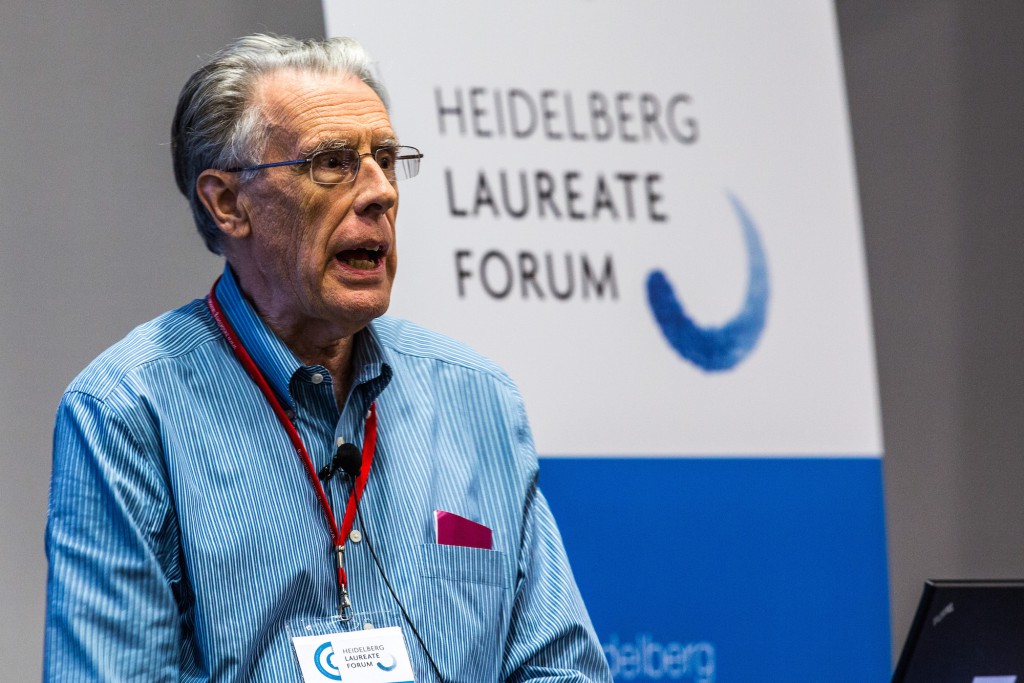John Hopcroft, Diversity, and One of the First Computer Science Courses
BLOG: Heidelberg Laureate Forum

I’ve long had a special interest in computer science education. I recently worked as a full time lecturer for two years, and I have been designing and delivering outreach initiatives for more than seven. So when it came time to request interviews with this year’s HLF Laureates, John Hopcroft, who created one of the world’s first computer science courses, caught my attention.
I began our conversation by introducing my interests in education, and right away Hopcroft pointed out that there is so much talent distributed around the world, but that educational opportunities are not so widely available. This has been in the case in China, for example, where Hopcroft has been working; he says their educational system needs help, and they know it. Of course, improving education everywhere is important. Hopcroft points out that as we move more and more into an intellectual economy, we need to better prepare our workforce.

For me, this means ensuring that we educate everyone with at least the basics of computing. Right now, the field of computer science is not very diverse. For example, in the United States, according to the National Centre for Women & Information Technology, only 18% of computer and information science bachelor degrees went to women in 2013, and women made up only 26% of the computing workforce. Hopcroft suggests that one factor in a rather complicated issue is that women seem to want to help people, while men are satisfied by learning more abstract things. This idea validates my own theory that many men are often happy to primarily learn about the tools of computing (code, hardware, etc) for the sake of it, while women tend to want to know what you can do with these tools.
So what was the diversity like in Hopcroft’s very first computer science class? Understandably, he wasn’t really aware of diversity at the time. After all, there was enough to worry about, like figuring out how to teach one of the world’s first courses on computer science despite having a background in electrical engineering. Ed McCluskey asked Hopcroft to teach the course, and in doing so, Hopcroft found himself becoming one of the world’s first computer scientists. This lead him to be at the top of the list whenever anyone needed a computer scientist for, say, an important committee, thus giving him opportunities that for most disciplines wouldn’t be possible until close to retirement. Hopcroft admitted he feels lucky for the way things worked out, and credits Ed for making it possible.
After learning that Hopcroft’s first courses covered automata theory, I wanted to know what he thought the best computer science teachers do more generally. He told me he went into teaching because of the impact his many world-class teachers had on him at every stage of his education – he wanted to do the same. To be a great educator, he told me, it is not about the content, which anyone can specify. The single most important thing is to make sure your students know you care.
I was curious what Hopcroft thought of recently proposed active learning techniques like peer instruction and flipped classrooms. He said he didn’t have any experience with them, so couldn’t really comment. However, he did reveal that he still uses the blackboard during lectures – that way, he can change his lecture on the fly according to student needs. I pointed out that this could be considered a form of active learning, as there would be a feedback loop in the classroom. He did point out that techniques like the flipped classroom have some hidden concerns. For example, one must consider the credit hours a course is worth. If you are shifting what was done during lecture into videos or reading ahead of time, are you adding more pressure to the students’ time?
I quite enjoyed my conversation with Hopcroft, and will leave you with some advice that he gives his students. Don’t focus on what your advisors have done in their careers; their work was done in an era where the focus was on making computer systems useful. Look instead to the future, when we will be focussing on doing useful things with computers.

